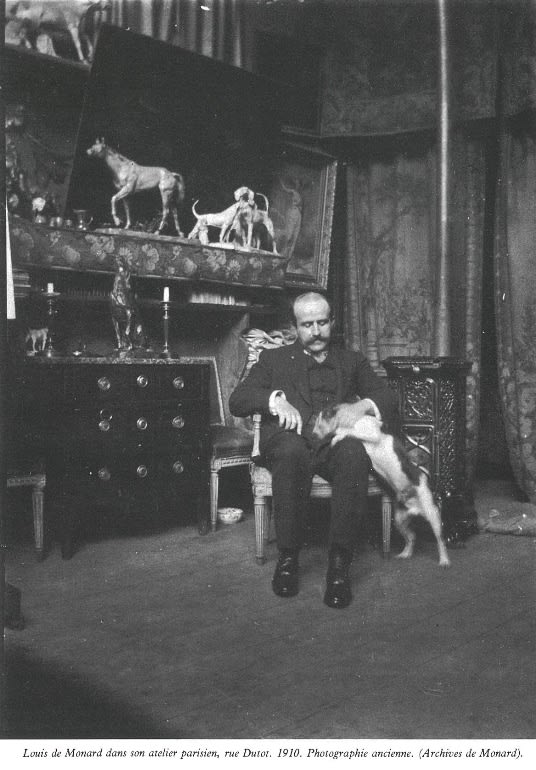Louis de Monard was born in Autun into a Champagne military family. He studied
at Autun and failed at the École spéciale militaire de Saint-Cyr. In 1892, he enlisted
in the dragons in Dijon from where he was released a year later. He then divided
his time between the family properties of Montot in the canton of Liernais and
Marcheseuil. Gifted with art and literature, he drew nature and was noticed by
Eugène Froment-Delormel (1821-1900), who lived near Autun, and by Philibert
Marillier (1829-1911)[1]. He moved to Paris in 1897 and frequented the Montmartre de
la Belle Époque (Xavier Privas, Charles Léandre, Guirand de Scevola, Roger
Reboussin, Théodore Botrel, Georges Courteline, etc.).
He exhibited for the first time at the Salon de la Société lyonnaise des beaux-arts in
1900. He was a member of the Société des artistes français to which he donated La
Jument au caveçon in 1904. In 1905, President Émile Loubet offered the King of Italy
a work entitled The Irish Cob. On that date, Monard joined the Société nationale des
beaux-arts. Between 1907 and 1909 he carved a series of dogs including a state
order, Fox terrier returning a crab, and monumental works such as The Eagle Hunt
(1908), Monument to Dead Airmen (1912), The Wild Boar Catch (1913).
He was mobilized as a gunner during the First World War. In 1921, he executed the
Monument to the Dead of Bois-le-Roi where he lived. In 1924, Anatole de Monzie
erects in Cahors his Dancing Centaure.
In 1932, he received the Puvis de Chavannes
Prize for Les Vautours installed in the water room of the square of Batignolles in
Paris.
Sick since 1931, Monard returns to painting. He paints felines, La Tigresse (1934),
visible in Bois-le-Roi. His last work Lionne et ses lionceaux, is a monumental group in
Bagnères-de-Luchon.
He worked with founders Hebrard and Valsuani, as well as with the Manufacture
de Sèvres between 1923 and 1925.
